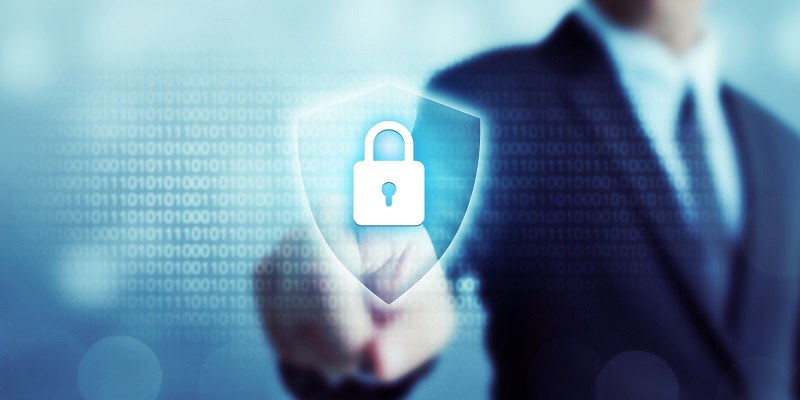The rapidly advancing digital landscape has led to an increased reliance on technology and interconnectedness. With this reliance comes the need for robust cybersecurity measures to protect computers, servers, mobile devices, networks, and sensitive data from digital attacks or unauthorized access. In this article, we will delve into the importance of cybersecurity and explore the evolving threat landscape, the essential cybersecurity measures, and the consequences of data breaches and cyberattacks.
Threat Landscape in Cybersecurity
The digital sphere is plagued by cybercriminals, hackers, and state-sponsored attacks who seek to exploit vulnerabilities and gain unauthorized access to systems and data. These adversaries employ various tactics such as phishing, ransomware, and malware to compromise networks and obtain sensitive information.
Cybersecurity Measures
Implementing strong passwords and firewalls
The first line of defense against cyber threats is the implementation of robust passwords and firewalls. Strong passwords, involving a combination of upper and lowercase letters, numbers, and special characters, significantly reduce the risk of unauthorized access. Firewalls act as protective barriers, monitoring and filtering incoming and outgoing network traffic.
Using antivirus software and regular system updates is crucial. Antivirus software detects and neutralizes malicious software, preventing malware infections. Regular system updates ensure that the latest security patches are installed, addressing known vulnerabilities and keeping systems up to date against emerging threats.
Data encryption and employee education
Encryption is vital in safeguarding sensitive information during storage and transmission. By converting data into unreadable code, even if intercepted, it remains incomprehensible to unauthorized entities. Additionally, employee education programs equip staff with the knowledge to recognize and respond effectively to potential cyber threats, mitigating the risk of a successful attack.
Consequences of Data Breaches and Cyberattacks
Organizations falling victim to data breaches and cyberattacks often experience significant financial losses, including the costs of incident response, legal consequences, and potential regulatory fines. Additionally, their reputation may suffer severe damage, impacting customer trust and loyalty.
Data breaches can lead to identity theft, enabling fraudsters to impersonate individuals, access financial resources, and engage in malicious activities. Privacy violations are also a significant concern, as personal information can be exposed to the public or sold on the dark web, compromising individuals’ privacy rights.
Cyberattacks targeting critical infrastructure, such as power grids or healthcare systems, can lead to severe disruptions in essential services, compromising public safety and well-being. Such disruptions highlight the need for robust cybersecurity measures to ensure the continuous functioning of vital systems.
Evolution of the Cybersecurity Industry
The cybersecurity industry is in a constant race against emerging threats. Security practitioners continuously develop new defense mechanisms, such as next-generation firewalls, intrusion detection and prevention systems, and advanced threat intelligence platforms, to effectively counteract evolving cyber threats.
Cybersecurity professionals must remain agile and adaptable to emerging threats. With the ever-changing tactics employed by cybercriminals, staying up to date with the latest threat intelligence and industry trends is crucial in building effective defense strategies.
Role of Cybersecurity Professionals
Cybersecurity professionals play a crucial role in safeguarding digital systems and data. They employ proactive measures to detect potential threats, prevent successful attacks through vulnerability assessments, and mitigate the damage caused by incidents through incident response plans and forensic analysis.
Engaging in threat intelligence activities, cybersecurity professionals gather information about potential threats, their methodologies, and indicators of compromise to develop effective defense strategies. Risk assessments assist in identifying vulnerabilities and assessing potential impact, leading to proactive mitigation actions. In the event of an incident, professionals employ incident response plans to ensure a swift and efficient response, followed by forensic analysis to identify the source and extent of the breach.
Government Regulations and Laws
Governments worldwide are recognizing the paramount importance of cybersecurity and introducing legislation to ensure organizations enhance their security practices. These regulations aim to protect critical infrastructure, non-public personal information, and other forms of sensitive data.
Government regulations and laws foster a culture of cybersecurity by encouraging organizations to prioritize security measures. Organizations are compelled to implement cybersecurity policies, conduct risk assessments, and adhere to minimum security standards, reducing the risk of cyber threats and ensuring the protection of sensitive information.
Artificial Intelligence and Machine Learning in Cybersecurity
Artificial Intelligence (AI) and Machine Learning (ML) are revolutionizing the cybersecurity landscape. These technologies excel in analyzing massive datasets, identifying patterns, and detecting anomalies that human analysts might overlook. AI/ML algorithms aid in threat detection and significantly reduce response time.
AI and ML technologies enable the automation of threat detection and response processes. By continuously monitoring networks and applying sophisticated algorithms, these systems can identify potential threats in real time. Automated response mechanisms can neutralize emerging threats swiftly, limiting potential damage.
Collaboration and Information Sharing
Collaboration and information sharing are vital components in the fight against cyber threats. Organizations, cybersecurity communities, and law enforcement agencies must work together to share threat intelligence, discuss emerging trends, and disseminate best practices, thereby strengthening the collective defense against cyber threats.
Creating a safer digital environment
Collaboration and information sharing efforts foster a safer digital environment by ensuring a unified front against cybercriminals. By pooling resources, knowledge, and expertise, the global cybersecurity community can stay one step ahead of emerging threats, developing stronger defense mechanisms and proactive strategies.
In a world heavily reliant on technology, cybersecurity becomes increasingly critical. Robust cybersecurity measures are vital to safeguard computers, networks, and sensitive data against cyber threats. By staying informed about the evolving threat landscape, implementing necessary security measures, and fostering collaboration, we can collectively create a safer digital environment, mitigating the potential consequences of cyberattacks and data breaches. Prioritizing cybersecurity must be a shared responsibility, cutting across all levels of society to ensure the protection of our digital assets and the preservation of privacy and trust.

